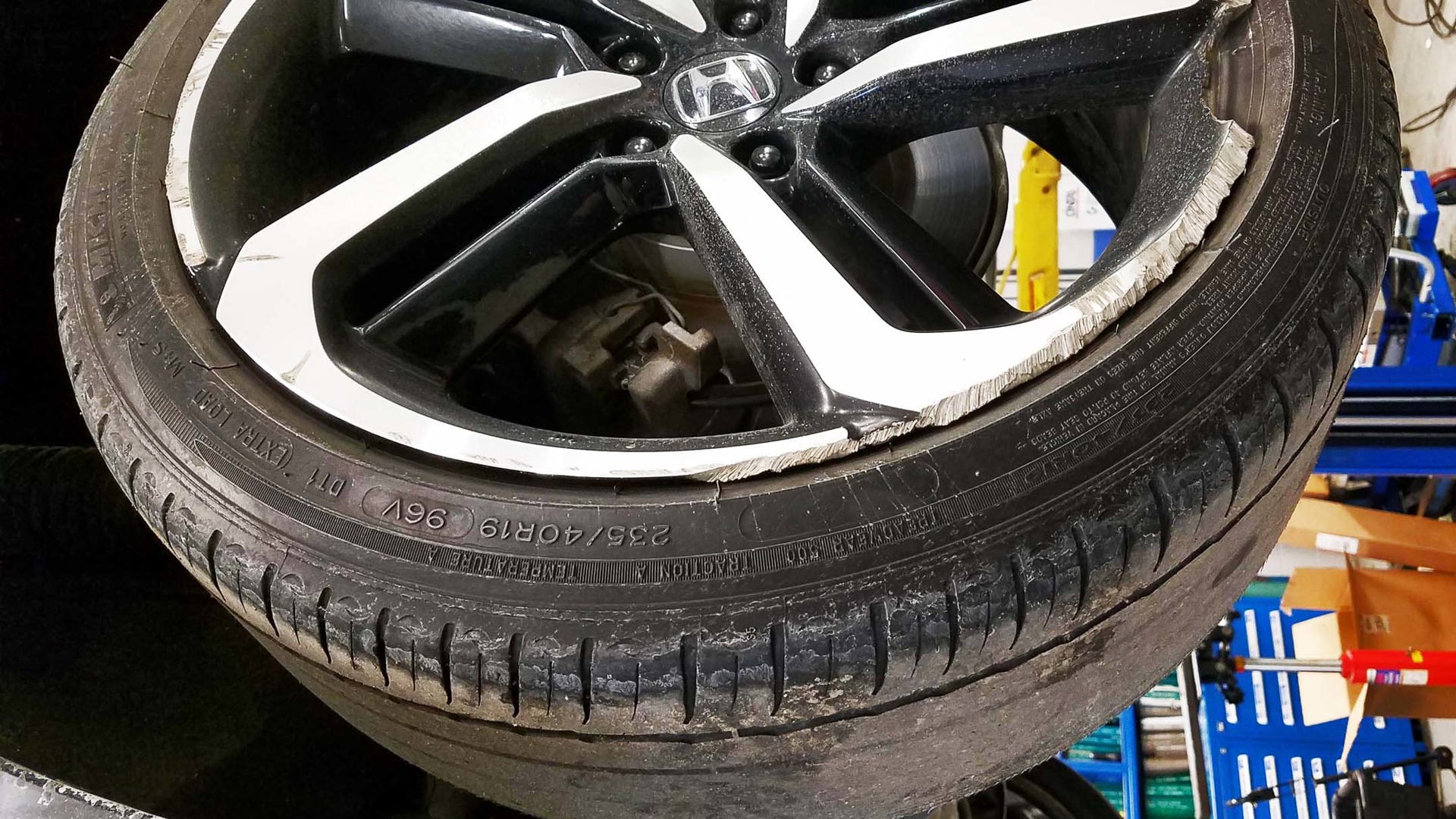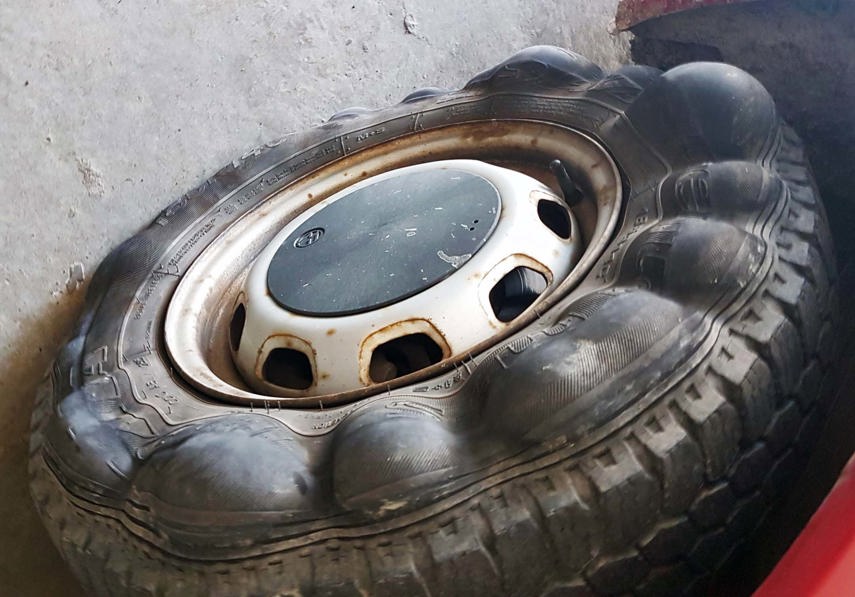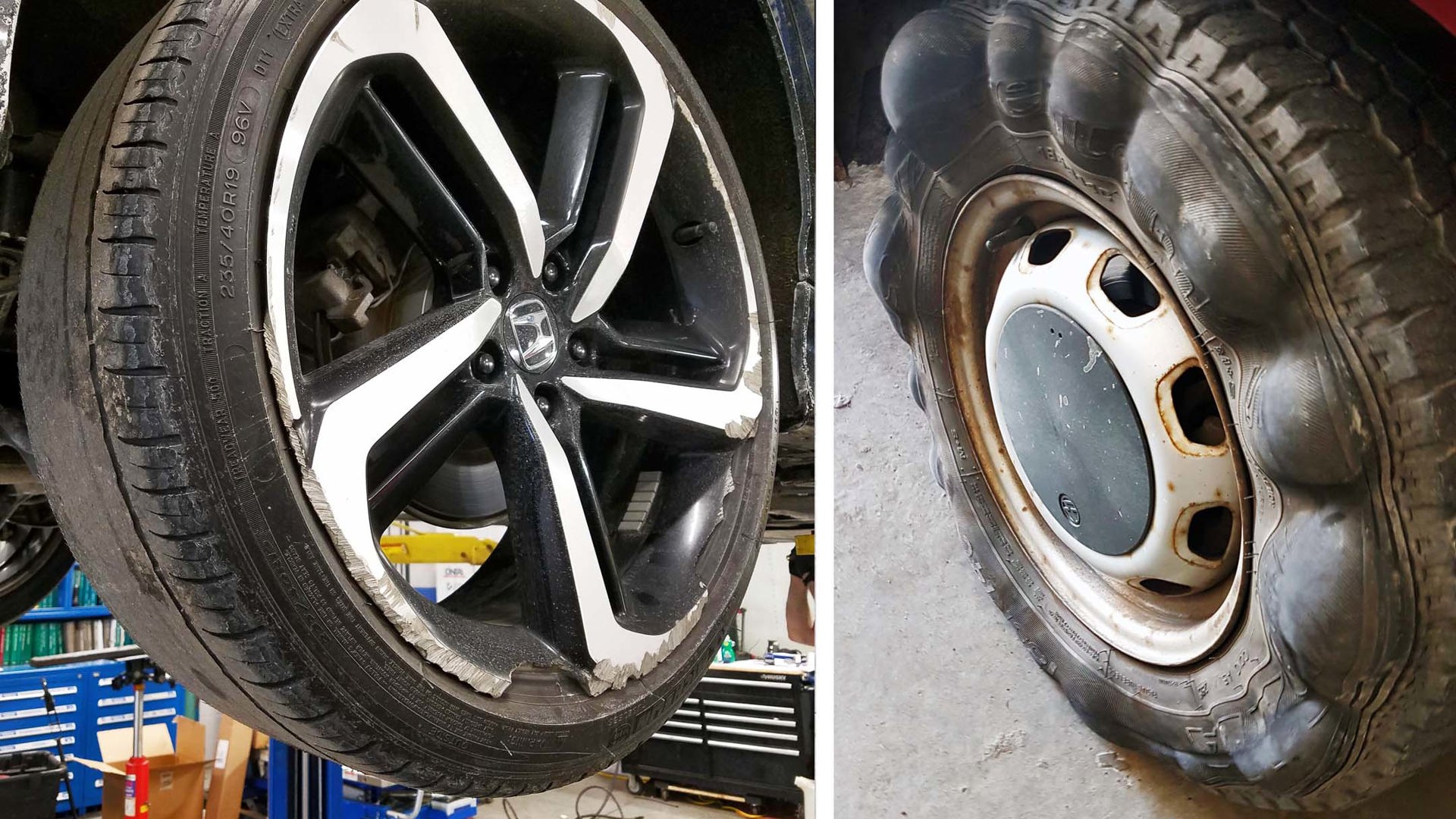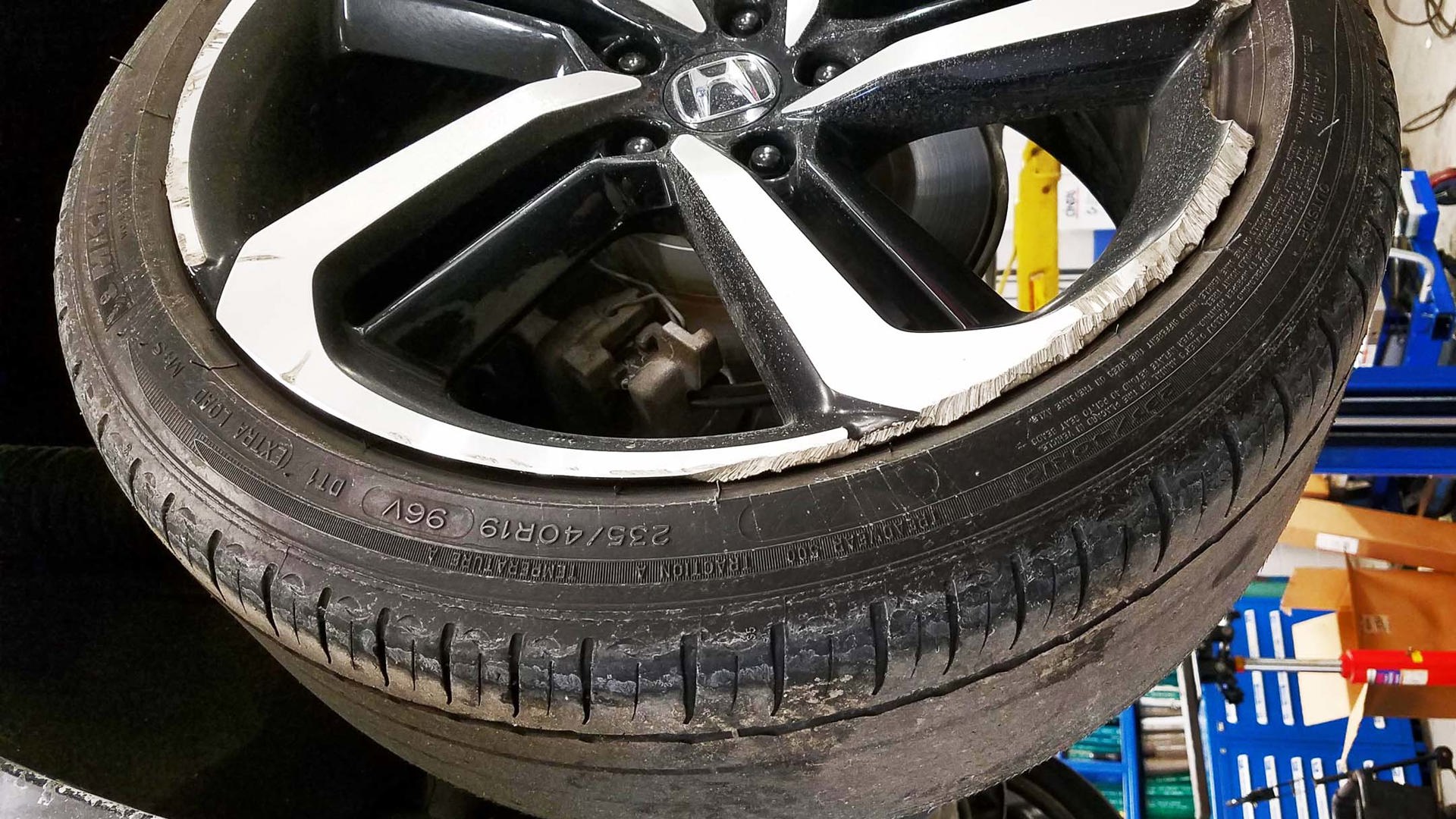Welcome to Goof of the Month: our monthly dip into the world of automotive cluelessness, fearing for the worst, and stories about the need for drivers and shoppers to understand their vehicle, how to maintain it, and how it works.
Pothole season in Canada usually starts in early spring, but it’s often forgotten quickly as potholes are patched, warm weather sets in, and people focus their energy elsewhere. The next spring, the process starts again.
This month, we’ve got two images from internet posts that show a few serious examples of how badly potholes (and other similar road hazards) can damage your wheels, tires, and vehicle in general. Both the examples we’ll provide below fall into “worst case scenario” territory, and we’d expect that the majority of drivers would detect and fix problems before they get this bad. Still, that’s not always the case – and sometimes, common sense just isn’t so common.
We asked two of our experts to examine the pictures and chime in, in hopes you’ll heed their warnings and have your vehicle inspected for signs of possibly hazardous pothole damage ahead of this year’s warm-weather family travel season.
(Note: given the origin of these images – hello, Reddit – you may find some disagreeable language if you click through to the comments section of these posts.)
Beat Up the Rim to Win… a Hefty Repair Bill

Let’s start with this post by user “John-The-Revelator”, which shows us an extreme example of a wheel on a newer Honda that’s been damaged by what appear to be multiple impacts with potholes (and possibly curbs), likely at high speed.
We’ve never seen a wheel in such poor condition, and we think it looks like it just lost a battle with an industrial shredder. The wheel is destroyed, and the vehicle in a hazardous condition – though somehow, the tire seems to be holding air. Look closely, and you’ll see that the tire is also fully worn, and (not surprisingly) showing signs of serious alignment trouble.
“Well, that’s a frightening mess,” says Lori Boerio, a service advisor at a dealership in Northern Ontario. “I’ve seen some pretty bad wheels come in, but none like this. I’d sure hope this vehicle wasn’t allowed back onto the road in that shape. The amount and severity of the damage suggests some heavy high-speed impacts, and the tire itself is also toast. You can see it has no tread left, and that it’s very unevenly worn.”
I asked Boerio what sort of symptoms the driver of this car might have experienced.
“I’d imagine a high-speed wobble or vibration would be the big one, given that pieces of the wheel are actually missing. There’d also be a strong steering pull through the wheel, in all likelihood, as the tire suggests that this vehicle’s alignment is out of whack, too.”
She adds: “If the damage here did occur over time, this driver was ignoring some pretty significant warning signs.”
The likely repair bill?
“Oh – into the thousands, anyhow,” Boerio says. “A new tire and factory wheel alone would eat up most of that; but damage to the suspension, steering, and maybe even the structure of the vehicle is also likely, given this image. If that vehicle continues being driven, the wheel and/or tire will fail, making things even more expensive.”
Boerio also notes that she’s astonished the tire isn’t flat.
“I showed this to our tire guy as well,” she says. “We’re both scratching our heads trying to figure out how this tire is still holding air. If this vehicle is driven, that tire could fail at any moment. We suspect that the vehicle owner was likely having to re-inflate that tire regularly – another sign of trouble.”
Though this case is extreme, it reinforces a simple point: potholes can damage many parts of your vehicle aside from its rims and tires. If your vehicle sounds, feels, or acts unusual this spring, you’re best to have it checked by a professional before the summer family travel season.
Bubble Trouble

Here’s our second example of extreme tire damage, and the image, posted by user “stajpp”, captures more than a few issues. Automotive service technician John Kennard helps explain:
“I’ve never seen a tire like that! Those lumps – sometimes you get one or two of those after a good whack on a pothole, but usually there are one or two of them, and they’re often smaller. Lumps on the tire indicate some damage, so if you notice any, you’re best to bring the vehicle in.”
Drivers can inspect their tires for problematic lumps in a few minutes, and this is a thing that should be done regularly – and especially during and immediately following pothole season. Simply run your hand over the entire inner and outer sidewall of each tire, feeling for lumps and bumps. If you find any, have the vehicle assessed, and the tire replaced.
“That many bumps and bruises, that big? Probably something much more serious than a few potholes,” Kennard says, suggesting that in any likelihood, this particular tire was driven with no air in it for some extended length of time. “That tire is finished, obviously. I hope that vehicle was taken off the road until that tire was looked after. That’s an accident waiting to happen.”
I asked Kennard whether a pothole (or potholes) could cause this sort of damage.
“I don’t think so, no. Not by themselves,” he says. “Maybe this vehicle had a flat from a pothole, but continued to be driven on that flat for some period of time. Could be all sorts of things, really.”
Kennard also notes that typically, a pothole-related blowout is not repairable. “If you blow a tire out on a pothole, there’s a good chance you’ve damaged the structure of the tire. Unlike a nail puncture, for instance, this usually can’t be repaired. You’ve got to replace the tire.”
The takeaway? Whether you get a flat tire from a pothole strike, or something else, stop driving on it, as soon as you can. Driving on a flat tire is dangerous, and so is driving on a flat tire for a while, patching and re-inflating it, and continuing to drive.
“The point here really is just ‘Don’t drive on a flat tire,’ whether it comes from a pothole, or anything else,” says Kennard.
“It’s a shame you can’t lose your driver’s licence for this sort of neglect,” Boerio adds. “The driver wouldn’t have missed this, I don’t think. And this picture clearly shows a massive safety defect and some exceptionally poor judgement on the part of the driver of that vehicle.”



